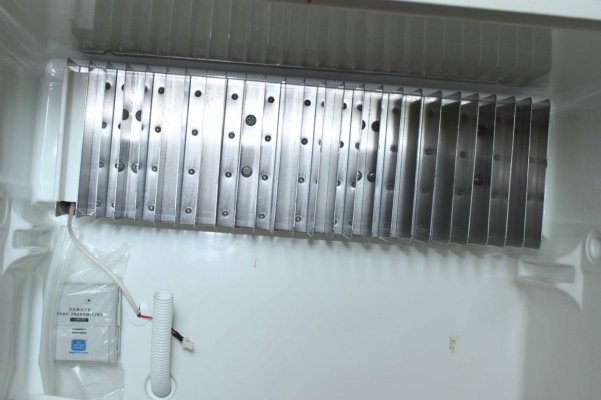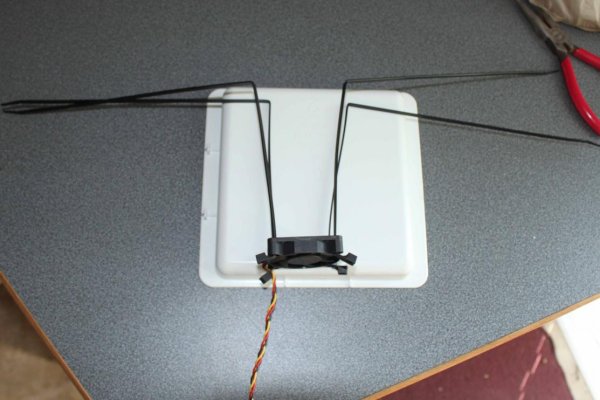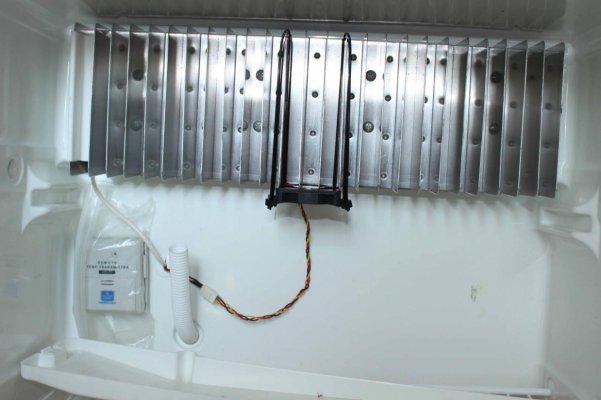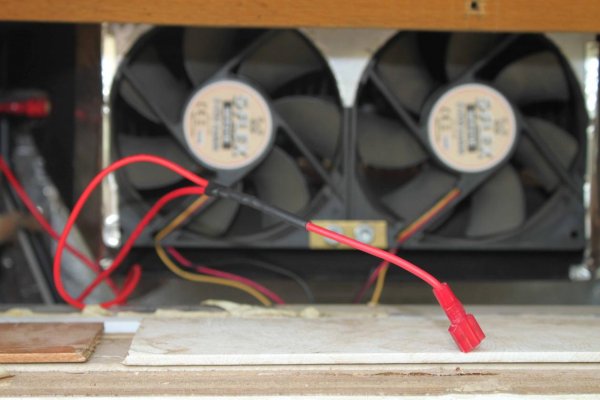JackandJanet,
There is an existing drain hole in the back wall of the refrigerator. It was plugged with a little clay plug which I simply removed to run the wire and then replaced it with a little calking. If the fan ever fails, I can just snip off the tie wraps, unplug the fan inside the fridge and plug in a new one without uncalking the lead-in wires. I had previously used one of those little rectangular battery powered fridge fans, but it corroded and failed last year. Not only does this 12v design take up a little less room (I can fit in one extra can of beer, uh I mean coke), but I never have to worry about last year's batteries failing in the middle of this year's trip.
Rather than tie into these lead-in wires I decided to use a self-contained interior light to avoid a maze of wires running everywhere. Besides, the interior fan only has power when I throw the switch inside the camper to provide power to the rear fans (so it doesn't run when I don't want it to.) This means that if the switch wasn't thrown I wouldn't have an interior fridge light. I decided to use one of those little clip-on 5 LED hat bill lights. I drilled 2 holes in the light to run wires to connect to the door switch. They run about 3 1/2 hours on their little button batteries. Since the fridge door is only open for a few seconds at a time during use (so I don't lose too much cold air) I forsee the batteries lasting for several years before needing replacement. If they do fail in the middle of a trip, so what? It's not as critical as the fridge fan failing. It will probably corrode and fail before the batteries go dead (based on prior experience). I will screw the microswitch out of the way by the door for a semi-permanent mounting. The tiny light assy will be secured by velcro to make it easier to replace batteries or the whole assy if necessary (I have a spare, if needed). I'll post up some pics when done.
Chip
There is an existing drain hole in the back wall of the refrigerator. It was plugged with a little clay plug which I simply removed to run the wire and then replaced it with a little calking. If the fan ever fails, I can just snip off the tie wraps, unplug the fan inside the fridge and plug in a new one without uncalking the lead-in wires. I had previously used one of those little rectangular battery powered fridge fans, but it corroded and failed last year. Not only does this 12v design take up a little less room (I can fit in one extra can of beer, uh I mean coke), but I never have to worry about last year's batteries failing in the middle of this year's trip.
Rather than tie into these lead-in wires I decided to use a self-contained interior light to avoid a maze of wires running everywhere. Besides, the interior fan only has power when I throw the switch inside the camper to provide power to the rear fans (so it doesn't run when I don't want it to.) This means that if the switch wasn't thrown I wouldn't have an interior fridge light. I decided to use one of those little clip-on 5 LED hat bill lights. I drilled 2 holes in the light to run wires to connect to the door switch. They run about 3 1/2 hours on their little button batteries. Since the fridge door is only open for a few seconds at a time during use (so I don't lose too much cold air) I forsee the batteries lasting for several years before needing replacement. If they do fail in the middle of a trip, so what? It's not as critical as the fridge fan failing. It will probably corrode and fail before the batteries go dead (based on prior experience). I will screw the microswitch out of the way by the door for a semi-permanent mounting. The tiny light assy will be secured by velcro to make it easier to replace batteries or the whole assy if necessary (I have a spare, if needed). I'll post up some pics when done.
Chip






